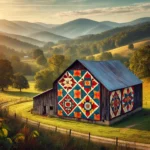When thinking of Texas, images of sprawling ranches, rugged cowboys, and high-energy rodeo events come to mind. The Texas rodeo isn’t just a sport—it’s a window into a lifestyle and cultural heritage that has defined the state for generations. This iconic event represents the grit, bravery, and independence of the American West, encapsulating the essence of cowboy culture.
This article takes you on a journey into the history and excitement of the Texas rodeo, a tradition rooted in the 19th century. We’ll explore how rodeo events showcase the skills of cowboys and cowgirls, from bull riding to steer wrestling, and why they remain beloved fixtures in Texas and beyond.
The History of Rodeo in Texas
The origins of rodeo date back to the mid-1800s when Texas ranchers and cowboys began testing their cattle handling skills in informal competitions. These events became social gatherings where ranchers would demonstrate their expertise in roping, herding, and riding. Over time, these contests grew more organized, evolving into the modern rodeo that blends athleticism with a deep cultural significance.
Texas played a pivotal role in the development of rodeo as a sport. The state’s vast open lands and cattle ranching heritage made it a natural home for these competitions. Cities like Pecos, Texas, claim to host some of the first formal rodeos in American history. Today, rodeos are held statewide, attracting participants and spectators from all over the world.
Key Elements of Traditional Texas Rodeo:
- Roping Competitions: Showcasing cowboy skills in herding and controlling cattle.
- Bronc Riding: A test of both rider and horse, measuring a cowboy’s ability to stay on a bucking bronco.
- Bull Riding: One of the most dangerous and thrilling events in rodeo, where riders must hold on to a wildly bucking bull for as long as possible.
Modern Rodeo Events and Popular Attractions
In contemporary Texas, rodeo has grown into a blend of competition, entertainment, and cultural celebration. Large-scale rodeos, such as the Houston Livestock Show and Rodeo and the San Antonio Stock Show & Rodeo, draw millions of visitors annually.
Key Events in Modern Rodeos:
- Bareback Riding: A challenging event where cowboys ride a horse with no saddle, testing their strength and control.
- Steer Wrestling: Cowboys leap from their horses to wrestle a steer to the ground, showcasing their speed and skill.
- Barrel Racing: Popular among female rodeo participants, this event requires riders to maneuver their horses through a cloverleaf pattern around barrels at high speed.
Beyond the adrenaline-packed competitions, rodeos today also feature a mix of cultural exhibits, food stalls, and live music, reflecting the broader Western heritage. Attendees can explore exhibits on cowboy craftsmanship, leatherwork, and more, offering a rich cultural experience that goes beyond the arena.
The Role of Cowboys in Texan Identity
Cowboys are more than just symbols of the Old West; they are central to Texas’ identity. The cowboy ethos—marked by hard work, perseverance, and independence—remains woven into the fabric of the state’s culture. Cowboys are celebrated as iconic figures in Texas’ past and present, and their influence extends far beyond the rodeo ring.
From Hollywood portrayals to country music, the cowboy image has been romanticized and globalized, but its roots remain firmly planted in Texas soil. The tradition of ranching, passed down through generations, keeps the spirit of the cowboy alive today. Rodeo events are not just competitions—they’re a way to honor this legacy and preserve a way of life.
Why Rodeo Remains Relevant Today
In an era of technological advances and urbanization, the Texas rodeo remains a celebration of heritage and tradition. The continued popularity of rodeos, particularly in Texas, reflects the enduring allure of the cowboy lifestyle and the community aspect that these events foster.
For many, rodeo isn’t just a sport but a cultural expression that connects modern-day Texans to their frontier roots. It offers a sense of continuity with the past while also providing thrilling entertainment for spectators. Even as Texas becomes more urbanized, the rodeo serves as a reminder of the state’s agricultural and rural foundations.
The Texas rodeo is much more than just a high-energy spectacle—it’s a living tradition that reflects the values, history, and identity of the Lone Star State. Whether you’re a local Texan or a visitor, attending a rodeo offers a unique insight into cowboy culture and the timeless spirit of the American West. So, saddle up and experience the excitement and history of the Texas rodeo for yourself!


